Understanding and analyzing website traffic is crucial for the success of any business. Website traffic analysis provides valuable insights into the performance, reach, and effectiveness of your website as well as your marketing efforts. This article will explain deep website traffic analysis, its significance, and how you can use modern tools to monitor key metrics.
What Website Traffic includes?
Website traffic means the number of visitors who access a website within a specific period. This traffic is measured by the number of visits or sessions. It can be categorized into several types, including:
- Organic Traffic: Visitors who find your website through search engine results.
- Direct Traffic: Visitors who type your website URL directly into their browser.
- Referral Traffic: Visitors who come from external websites.
- Paid Traffic: Visitors who arrive through paid advertising campaigns.

Why Analyzing Website Traffic is Important
Analyzing website traffic is essential for several reasons:
Performance Evaluation
Understanding the number of visitors, page views, and session durations helps you assess how well your website is performing. This data can highlight areas needing improvement and optimization.
Audience Insights
Traffic analysis provides detailed information about your audience, including demographics, geographic location, device usage, and referral sources. This knowledge helps adjust your content and marketing strategies to better meet your audience's needs.
Content Optimization
Identifying which pages or blog posts are most popular and engaging allows you to refine your content strategy. Focus on creating more of what resonates with your audience and improving underperforming content.
Conversion Tracking
By tracking conversions, you can measure the effectiveness of your marketing efforts. Understanding which actions visitors take, such as making purchases or subscribing to newsletters, helps evaluate the ROI of your campaigns.
SEO Optimization
Analyzing organic search performance helps identify the keywords driving the most traffic, the most visible landing pages, and the search queries leading users to your site. This information is critical for improving your SEO strategy.

How to Analyze Website Traffic
To effectively analyze website traffic, follow these steps:
1. Set Up Web Analytics Tools
Begin by setting up a web analytics tool like Google Analytics. This tool provides comprehensive data on traffic, user behaviour, conversions, and more.
In order to get up-to-date metrics from Google Analytics to create marketing reports it’s advisable to use reporting automation tools like DataSlayer. It allows pulling the data from 45+ popular sources like Google Ads, Facebook Ads, LinkedIn Ads etc and uploading it automatically into Google Sheets, Looker Studio, Big Query , PowerBI or any other platform of your choice for creating reports thus saving time and avoiding manual errors. You can start the free 15-day trail to see how it can help you.
2. Define Key Metrics
Identify key metrics aligned with your goals, such as visits/sessions, page views, bounce rate, average session duration, conversion rate, and traffic sources.
3. Segment Your Traffic
Segment your traffic by demographics, geographic location, referral source, device type, or behaviour. This approach helps you understand how different audience segments interact with your website.
4. Analyze Landing Pages
Evaluate the performance of your landing pages by identifying the ones with the highest traffic, engagement, and conversions. Use these insights to improve content, design, and user experience across your site.
5. Monitor Referral Sources
Track the websites, social media platforms, or directories driving the most traffic to your site. This information can help optimize your marketing efforts and build valuable partnerships.
6. Track Conversions
Set up conversion tracking to measure the effectiveness of your marketing campaigns. Analyze the number of conversions, conversion rates, and specific actions leading to conversions to identify successful and underperforming campaigns.
7. Monitor SEO Performance
Evaluate your organic search performance by identifying keywords driving traffic and conversions, and landing pages ranking well in search results. Optimize your SEO strategy based on these insights.
8. Use Heatmaps and User Recordings
Heatmaps and user recordings provide deeper insights into user behavior. Heatmaps show where users click, scroll, and spend the most time, while user recordings offer a firsthand view of navigation patterns.
9. Regularly Monitor and Analyze with Automation Tools
Continuous monitoring and analysis of website traffic is essential. Regularly update your strategies based on the insights gained to ensure ongoing optimization and improved performance. The automation tools like DataSlayer in this case help save time on getting data from Google Analytics into the destinations of your choice (Looker Studio, Google Sheets, PowerBI, BigQuery and others).
Website traffic analysis is a powerful tool for understanding and optimizing your online presence. By leveraging data-driven insights, you can improve user engagement, content, and increase conversions. While immediate results might vary, consistent monitoring and optimization with automation tools are key to long-term success.







